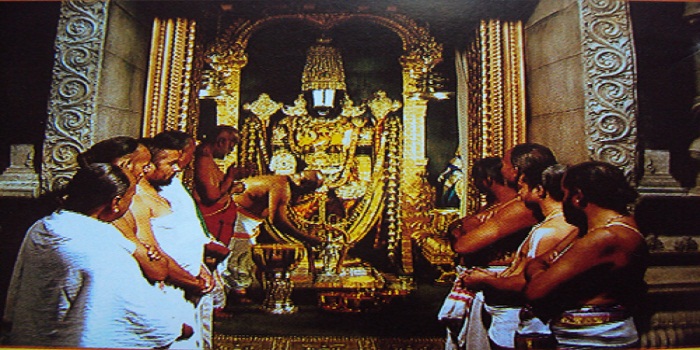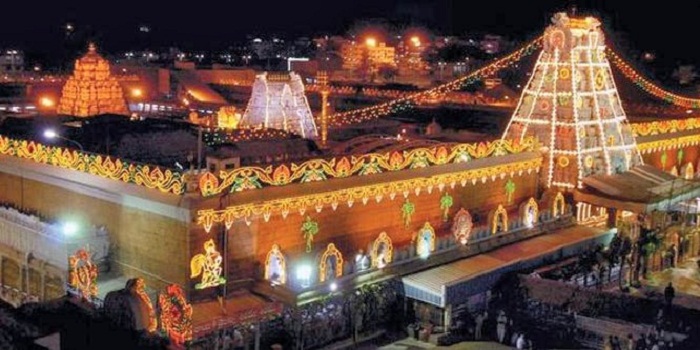
Tirumala Tirupathi the most sacred place for Hindus is also a land where each and every monument, stone, Sculpture will take you centuries back to explain its story. Every one of you might have visited this holy place at least once. But you might have missed out many things to see.It’s common as there is so much to see, learn and develop spirituality definitely everyone will not able to checkout every thing. There are still some unknown phenomenons occurring at this Land of Kaliyuga Daivam Lord Venkateshwara Swamy.
Today we are here trying to display you some of the most unbelievable things about this ultimate pilgrim destination to every one.
1. At the Mahadwaram of the temple, To the left side there is an Crowbar by which Ananthatalvar had hit Lord Venkateshwara swamy on the chin when swamy was in his childhood which oozed blood. Since then the tradition of applying sandalwood to his chin came into existence.
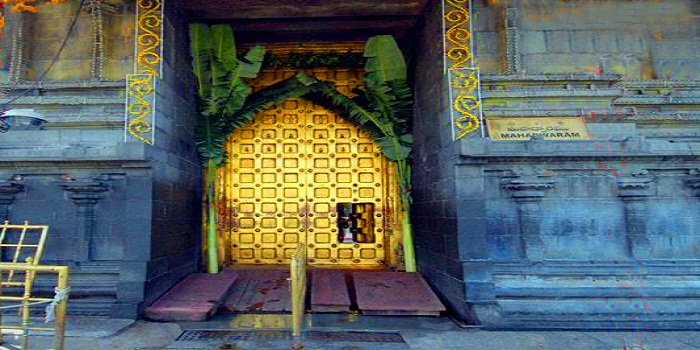
2. It is said that there is real hair to the Idol of Lord Venkateshwara Swamy and is rumoured that knots never ever appear in this hair.
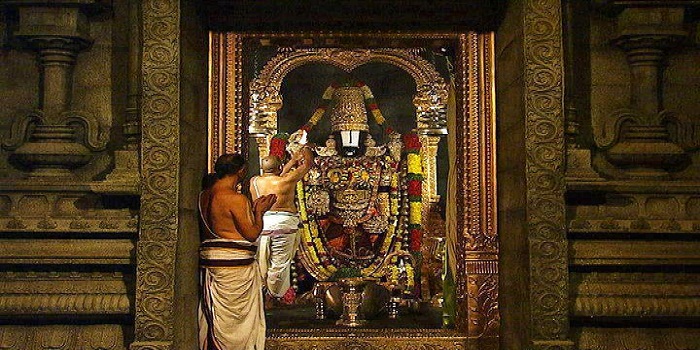
3. At a distance of 22 km from this sacred place there exists an village where no one is allowed except the residents of the village. The women of the village have a tradition of not wearing blouse. The Village has a garden of flowers from where the flowers are fetched and used in at the sanctum of the Lord Venkateswara Swamy. Not Just flowers, items like Milk, Ghee, Butter and all others used for the worship of the lord are brought just from this village only.
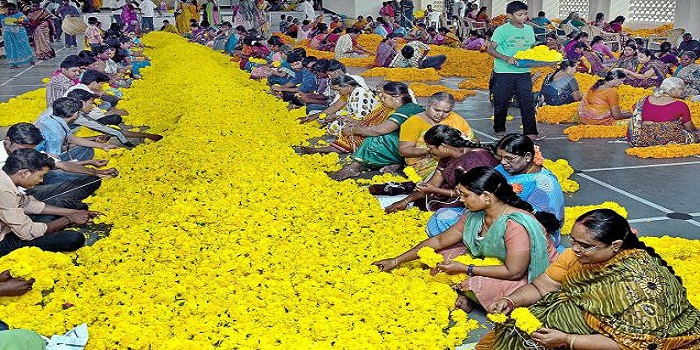
4. The state of the is assumed to be at the centre of the sanctum, but instead it is established to the right corner. You could know this when observed for outside.

5. Every day the idol of the god is decorated at the bottom with an Dhoti and with a saree on the top. There exists an service that costs Rs.50,000/- and the couple participating in this service will be given presented with this pair( Dhoti for Men and Saree for Women). The chance of getting this service is very rare as the number of tickets will be very less.
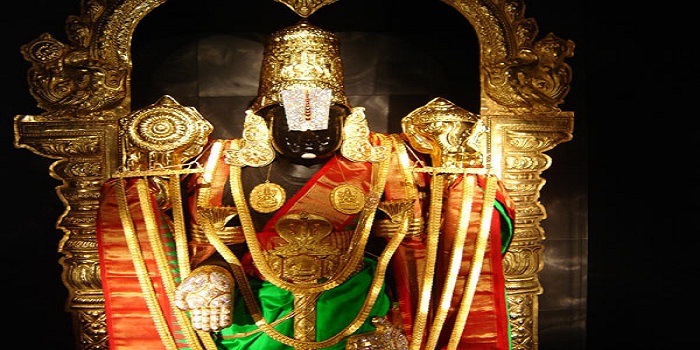
6. The flowers used in the sanctum will be never brought out of the sanctum. These flowers are leaved(facing forward and leaving behind) in an small water fall that exists behind the idol of the swamy.
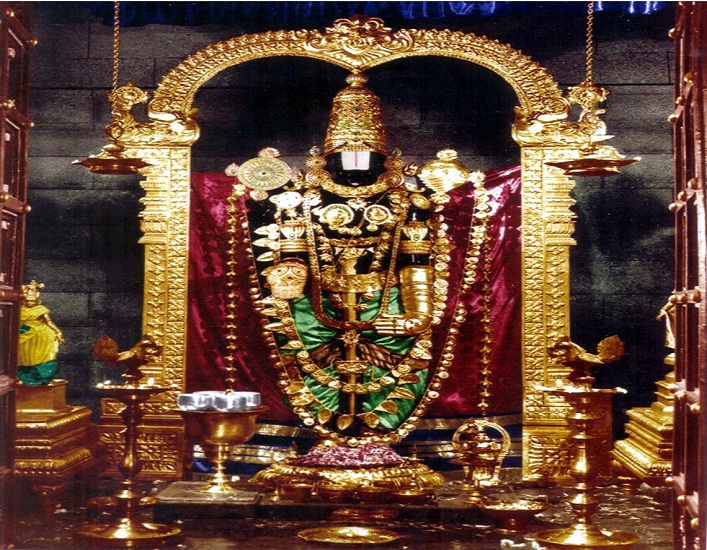
7.You can hear the sound of an ocean when your place an ear on the back of lord and no matter how many times you clean the back there exists moisture on the back of the idol.
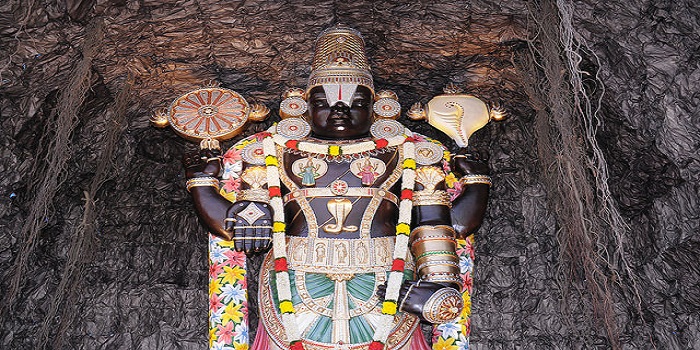
8. On the chest of the Lord, Lakshmi Devi Image is imprinted. Every Thursday during “Nijarupa Darshanam” the lord will be decorated with Sandalwood. While removing this Sandalwood the Mold of Lakshmi Devi will be obtained which is kept for sale.
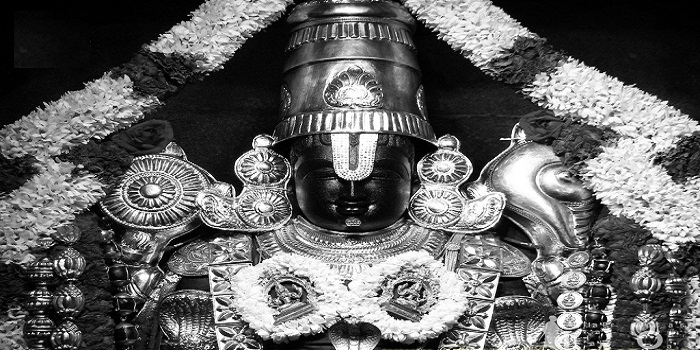
9. The oil lamps in front of the idol of the lord are never ever put off and no one knows the day they are lit up. But for sure they are lit thousands of years ago.
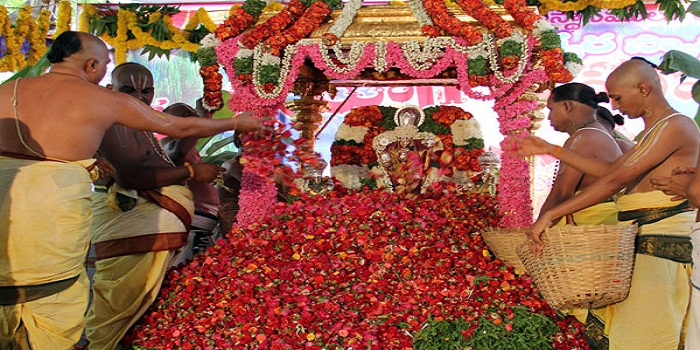
10. As said above one of the priest of the temple will discards all the used items of the sanctum in the water fall behind the idol of the lord and no one is allowed to look at the back the whole day. All this discarded items will emerge at a place called Verpedu(located on the way to kalahasti) which is 20km from this sacred place.
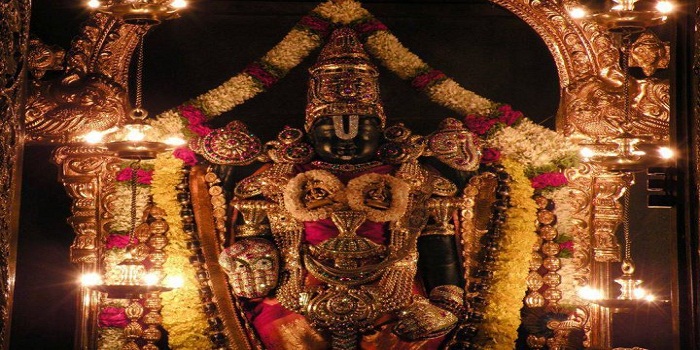
11. During 1800’s this temple is closed for 12 years. A King of unknown name of that time is said to kill 12 people at the temple and hang them to the wall for doing unsacred thing at the temple. At this time it is said that Vimana Venkateswara have came to existence.
